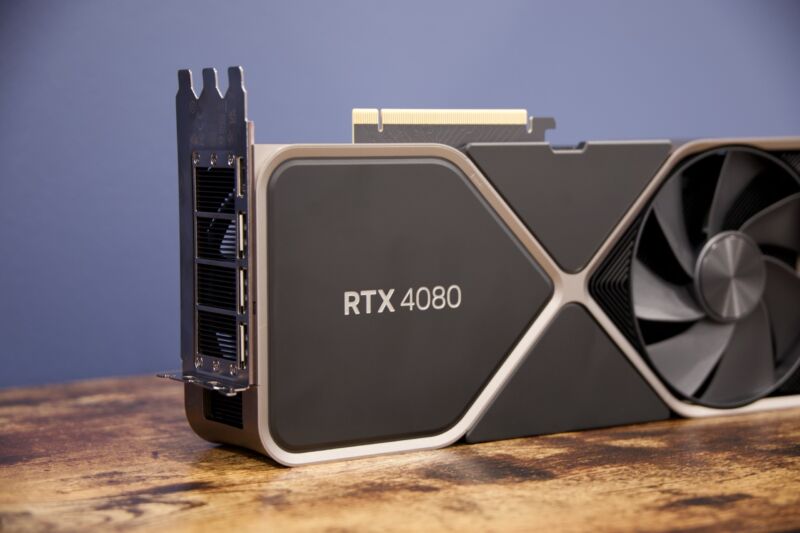
Enlarge / Nvidia's GeForce RTX 4080. (credit: Andrew Cunningham)
The video encoding hardware built into GeForce GPUs is getting a small boost, according to a quietly updated Nvidia support page (as spotted by Tom's Hardware). Previously, the NVENC encoder built into GeForce GPUs could encode up to three video streams simultaneously. Now, most GPUs supported by Nvidia's current drivers can encode up to five streams of video simultaneously, unlocking capabilities that had always been present in the hardware but that were software-limited in consumer GPUs.
It's unclear exactly when Nvidia made this change, but archival snapshots on the Internet Wayback Machine show the old three-stream limit as recently as March 18, so you may need to install the most recent drivers to unlock the additional encoding capabilities. Your video quality settings may also limit the number of video streams you can encode simultaneously.
Most GeForce GPUs going back to the 2014-era Maxwell architecture now support the extra simultaneous streams, so you don't need a new or powerful video card to benefit from the change (though there are some models, particularly MX-series GPUs for budget laptops, that still don't have any video encoding capabilities, presumably because they're missing the hardware). Models as old as the GeForce 750 Ti are on the list, as are most GeForce 900, 1000, 2000, 3000, and 4000-series cards. The kinds of video you can encode will still come down to what your GPU's hardware encoder actually supports; that Nvidia support document lists supported codecs, color depths, and other specs for each GPU.
Read 1 remaining paragraphs | Comments
from Tech – Ars Technica https://ift.tt/S9fnYyk
No comments:
Post a Comment